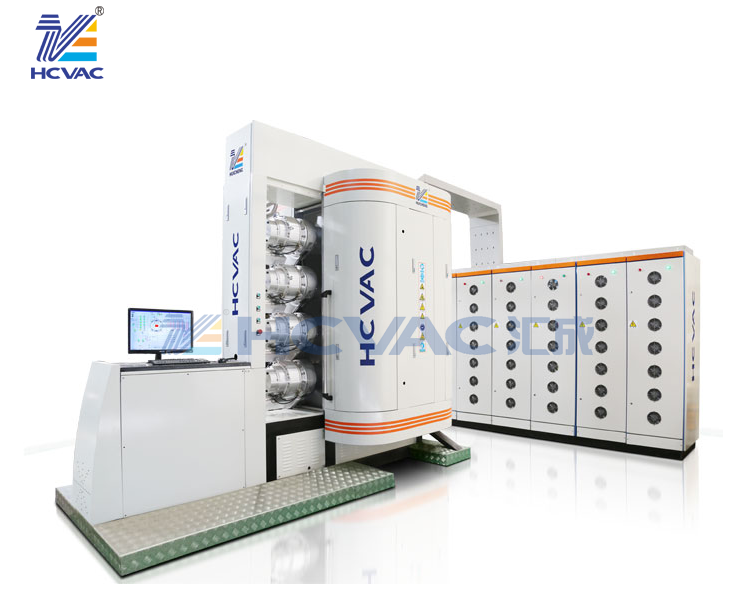


News centres
Many people always simulate ambiguity in vacuum plating, sputtering and coating of vacuum coating machine, and the difference between vacuum plating and coating is still very big. The following is a brief introduction for everyone, hoping to help everyone:
The vacuum coating machine adopts PVD- physical vapor deposition, which refers to the process of transferring atoms or molecules from the source to the substrate surface by physical process. Its function is to spray some particles with special properties (high strength, wear resistance, heat dissipation, corrosion resistance, etc.) on the matrix with lower performance, so that the matrix has better performance.
The basic methods of vacuum coating by vacuum coating machine: vacuum evaporation, sputtering and ion plating (hollow cathode ion plating, hot cathode ion plating, arc ion plating, reactive ion plating, radio frequency ion plating and DC discharge ion plating)

Vacuum evaporation, sputtering and ion plating:
Vacuum plating mainly includes vacuum evaporation, sputtering and ion plating. They all deposit various metal and nonmetal films on the surface of plastic parts by distillation or sputtering under vacuum conditions. In this way, a very thin surface coating can be obtained, which has the outstanding advantages of high speed and good adhesion, but the price is also high, and there are few metal types that can be operated, which are generally used as functional coatings for higher-grade products.
Vacuum evaporation is a method of heating metal under high vacuum, melting it, evaporating it, and cooling it to form a metal film on the surface of the sample. The thickness of the coating is 0.8-1.2um. The tiny concave-convex parts on the surface of the molded product are filled to obtain a mirror-like surface, and the bottom surface coating treatment must be carried out when vacuum evaporation is carried out to obtain the mirror function or vacuum evaporation is carried out on the steel strip with low adhesion. Sputtering usually refers to magnetron sputtering, which belongs to high-speed and low-temperature sputtering method. In this process, the vacuum degree is about 1×10-3Torr, i.e., 1.3×10-3Pa is filled with argon (Ar), and a high-voltage direct current is applied between the plastic substrate (anode) and the metal target (cathode). Electrons generated by glow discharge excite the inert gas and generate plasma, which blows out atoms of the metal target and deposits them on the plastic substrate Generally, DC sputtering is used for metal coating, while RF AC sputtering is used for non-conductive ceramic magnetic materials.
Ion plating in vacuum coater is a method which uses gas discharge to ionize gas or evaporated substance partially under vacuum condition, and deposits evaporated substance or reactant on substrate under bombardment of gas ion or evaporated substance ion. These include magnetron sputtering ion plating, reactive ion plating, hollow cathode discharge ion plating (hollow cathode evaporation method), multi-arc ion plating (cathode arc ion plating) and so on. Coating: Coating, also known as brush plating or grooveless plating, is a technology of local rapid electrochemical deposition of metal on the surface of metal workpiece, and its principle and essence belong to the scope of electroplating process in electrochemical machining. Contrary to electrolysis, metal ions in electroplating solution are used for plating and depositing on the cathode under the action of electric field.